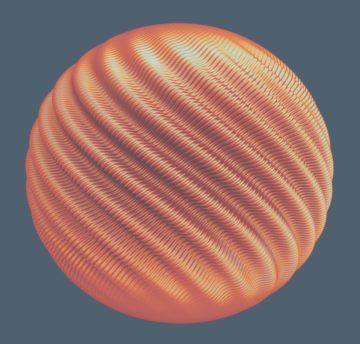Mordechai Rorvig in Quanta:
 In the 1950s, four decades before he won a Nobel Prize for his contributions to game theory and his story inspired the book and film “A Beautiful Mind,” the mathematician John Nash proved one of the most remarkable results in all of geometry. Among other features, it implied that you could crumple a sphere down to a ball of any size without ever creasing it. He made this possible by inventing a new type of geometric object called an “embedding,” which situates a shape inside a larger space — not unlike fitting a two-dimensional poster into a three-dimensional tube.
In the 1950s, four decades before he won a Nobel Prize for his contributions to game theory and his story inspired the book and film “A Beautiful Mind,” the mathematician John Nash proved one of the most remarkable results in all of geometry. Among other features, it implied that you could crumple a sphere down to a ball of any size without ever creasing it. He made this possible by inventing a new type of geometric object called an “embedding,” which situates a shape inside a larger space — not unlike fitting a two-dimensional poster into a three-dimensional tube.
There are lots of ways of embedding a shape. Some preserve the shape’s natural form — like rolling the poster into a cylinder — while others crease or tear it to make it fit in different ways.
Nash’s technique unexpectedly involved adding twists to all of a shape’s curves, making its structure springy and its surface ruffled. He proved that if you added infinitely many such twists, you could crumple the sphere down to a tiny ball. The result shocked mathematicians who previously had thought that crisp folds were required to crumple the sphere in this way.
Since then, mathematicians have sought to gain a precise understanding of the limits of Nash’s pioneering techniques.
More here.
